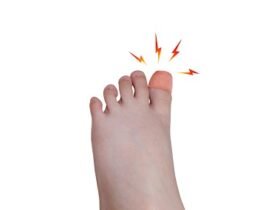Broken ribs can be excruciatingly painful and significantly impact daily life. One of the most common questions that arise when dealing with this injury is: “How long does it take for broken ribs to heal?” While the answer may seem straightforward, the healing process for broken ribs is multifaceted and influenced by various factors. In this article, we will delve into the complexities of rib fractures, exploring the typical timeline for recovery, factors that can affect healing duration, and essential tips for managing pain and promoting optimal healing. By understanding the nuances of this injury, individuals can better navigate their recovery journey and make informed decisions about their treatment plan.
What are broken ribs?
Broken ribs, medically known as rib fractures, occur when one or more of the bones in the rib cage crack or break. The rib cage serves the vital function of protecting the organs in the chest, including the lungs and heart. When ribs fracture, it can cause intense pain, especially during breathing or movement. Rib fractures commonly result from trauma to the chest, such as from falls, motor vehicle accidents, or direct blows. Additionally, conditions like osteoporosis or repetitive stress injuries can weaken the ribs, increasing the risk of fractures. Understanding the nature of broken ribs is essential for proper diagnosis, treatment, and management of this injury.
Causes of Broken Ribs:
Understanding the diverse causes of broken ribs is essential for recognizing potential risk factors and implementing preventive measures.
Traumatic Injuries:
- Falls from heights or slips leading to forceful impacts on the chest.
- Motor vehicle accidents involving direct chest trauma.
- Sports-related injuries, particularly in contact sports like football or martial arts.
- Physical altercations resulting in punches, kicks, or blunt force trauma to the chest.
Medical Conditions:
- Osteoporosis, weakening the bones and increasing susceptibility to fractures from minor trauma or even coughing.
- Metastatic cancer spreading to the ribs, weakening them and making them prone to fractures.
- Repetitive stress injuries from activities or occupations involving frequent movements or heavy lifting.
- Certain medications, such as long-term use of corticosteroids, impacting bone density and increasing fracture risk.
Types of Broken Ribs:
Broken ribs present varying degrees of severity and complexity, each requiring tailored treatment approaches for optimal healing and recovery.
- Simple Fracture: This is the most common type, where the rib breaks cleanly without damaging surrounding tissues.
- Displaced Fracture: In this type, the broken ends of the rib may shift out of alignment, potentially causing complications such as punctured organs.
- Segmental Fracture: This occurs when the rib breaks in two or more places, creating multiple fragments.
- Comminuted Fracture: In comminuted fractures, the rib shatters into several small pieces, increasing the complexity of treatment and healing.
- Flail Chest: This severe type of rib fracture involves multiple adjacent ribs breaking in multiple places, causing a segment of the rib cage to move independently from the rest of the chest wall. This can impair breathing and require urgent medical attention.
- Hairline Fracture: Also known as a stress fracture, a hairline fracture is a small crack in the rib that may not be immediately apparent but can still cause discomfort and pain, especially during certain activities.
- Costochondral Separation: While not technically a rib fracture, this injury involves the separation of the rib from the cartilage connecting it to the sternum, leading to similar symptoms and treatment considerations as rib fractures.
- Intense pain in the chest, particularly during breathing or movement.
- Tenderness and swelling at the site of the injury.
- Difficulty breathing deeply.
- Bruising or visible deformity over the affected area.
- Sharp pain when pressing on the ribcage.
- Pain that worsens with coughing or sneezing.
Conservative Management:
- Pain management with over-the-counter or prescription medications.
- Rest and limiting activities that exacerbate pain.
- Application of ice packs to reduce swelling and alleviate discomfort.
- Use of supportive measures like wrapping the chest with bandages or wearing a rib belt for stabilization.
Medical Interventions:
- Prescription pain medications for severe pain.
- Breathing exercises to prevent complications like pneumonia.
- Surgical Intervention:
- Reserved for severe cases or complications like flail chest.
- Procedures may include open reduction internal fixation (ORIF) or rib plating to stabilize fractured ribs.
Complications and Risks:
- Pneumothorax (collapsed lung) or hemothorax (accumulation of blood in the chest cavity).
- Pleural effusion (build-up of fluid around the lungs).
- Chronic pain or impaired lung function if not properly managed or treated.
Rest and Activity Modification:
- Avoid strenuous activities and movements that strain the chest muscles.
- Gradually resume normal activities as pain decreases, taking care to avoid sudden movements or heavy lifting.
- Use pillows or cushions to support the chest while sleeping to minimize discomfort.
Pain Management:
- Take prescribed or over-the-counter pain medications as directed by a healthcare provider to alleviate discomfort.
- Apply ice packs to the injured area for 15-20 minutes at a time several times a day to reduce pain and swelling.
- Use heat therapy, such as warm compresses or heating pads, to relax tense muscles and promote circulation.
Breathing Exercises:
- Practice deep breathing exercises to prevent respiratory complications like pneumonia.
- Use an incentive spirometer to improve lung function and prevent the buildup of fluid in the lungs.
- Perform gentle coughing or huffing exercises to clear mucus and prevent respiratory infections.
Supportive Measures:
- Wear a rib belt or chest wrap as recommended by a healthcare provider to provide stability and support to the injured ribs.
- Maintain good posture to prevent strain on the chest muscles and promote healing.
- Engage in gentle stretching and strengthening exercises once cleared by a healthcare provider to prevent stiffness and promote recovery.
Follow-up Care:
- Attend follow-up appointments with a healthcare provider to monitor healing progress and address any concerns.
- Follow any additional recommendations or instructions provided by a healthcare provider for optimal recovery.
- Seek medical attention promptly if experiencing worsening pain, difficulty breathing, or any signs of complications.
Now we are talking about the healing process
How Long Does It Take for Broken Ribs to Heal?
The healing process for broken ribs is a gradual journey, typically spanning several weeks to months, with various factors influencing the timeline.
Initial Healing Phase (First Few Weeks):
- During the initial phase, which lasts for the first few weeks after the injury, the body initiates the inflammatory response to repair damaged tissues.
- Pain and discomfort are often most intense during this phase as the body forms a blood clot at the site of the fracture to stabilize the area.
- Rest and pain management are crucial during this period to support the healing process and alleviate discomfort.
Consolidation Phase (3 to 6 Weeks):
- Over the next 3 to 6 weeks, the fractured ribs begin to knit together as new bone tissue forms, gradually stabilizing the injury.
- Pain and swelling may begin to subside during this phase as the ribs become more stable, and the inflammatory response diminishes.
- Activities may still be limited during this phase to prevent further injury and promote optimal healing.
Remodeling Phase (Several Months):
- The final phase of healing, which can extend for several months, involves the remodeling of the newly formed bone tissue to restore strength and function.
- While the ribs may appear healed on imaging tests, such as X-rays, complete remodeling and return to pre-injury strength may take longer.
- Rehabilitation exercises and gradual return to normal activities are essential during this phase to rebuild strength and endurance.
Factors Influencing Healing Time:
- Age: Younger individuals tend to heal faster, while older adults may experience a slower healing process.
- Overall Health: Underlying medical conditions or poor nutrition can delay healing and prolong recovery.
- Severity of Injury: Multiple or complex fractures may require more time to heal compared to simple fractures.
- Treatment Approach: Conservative management versus surgical intervention can impact healing time and outcomes.
Return to Normal Activities:
- Most individuals can expect significant improvement in symptoms within 6 to 8 weeks, though full recovery may take longer.
- Gradually reintroducing activities and exercises recommended by healthcare providers can help rebuild strength and endurance.
- It’s essential to listen to the body and avoid overexertion to prevent setbacks or re-injury during the recovery process.
Conclusion:
The healing journey for broken ribs is a multifaceted process that varies from individual to individual. While the initial phase of healing typically lasts for a few weeks, complete recovery may take several months. Factors such as age, overall health, severity of the injury, and treatment approach all play a role in determining the healing timeline. Understanding these factors and managing expectations are essential for navigating the recovery process effectively. Despite the challenges posed by broken ribs, most individuals can expect significant improvement in symptoms within a couple of months, with gradual reintroduction of activities recommended by healthcare providers. It’s crucial to prioritize rest, follow medical advice, and listen to the body’s signals to avoid setbacks and promote optimal healing. By adopting a patient and proactive approach to recovery, individuals can maximize their chances of returning to normal activities and enjoying a full and active life post-injury.












Got a Questions?
Find us on Socials or Contact us and we’ll get back to you as soon as possible.